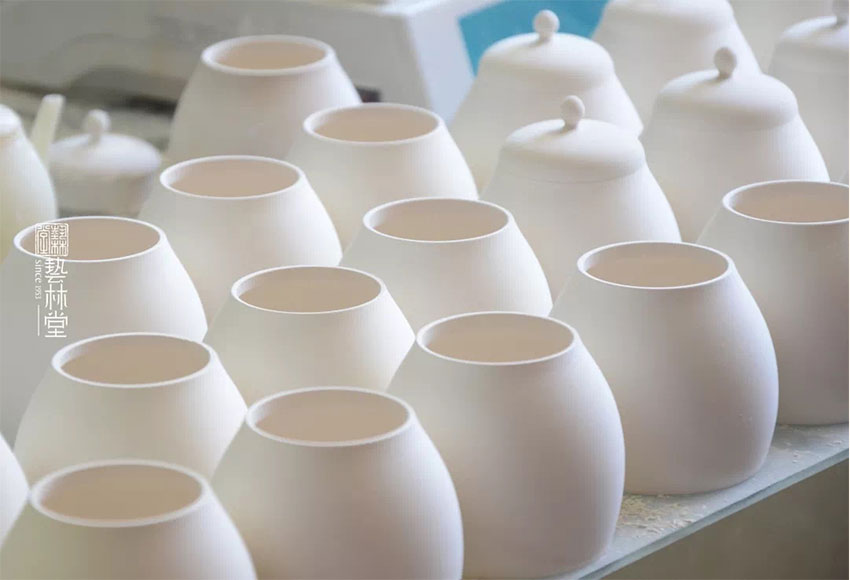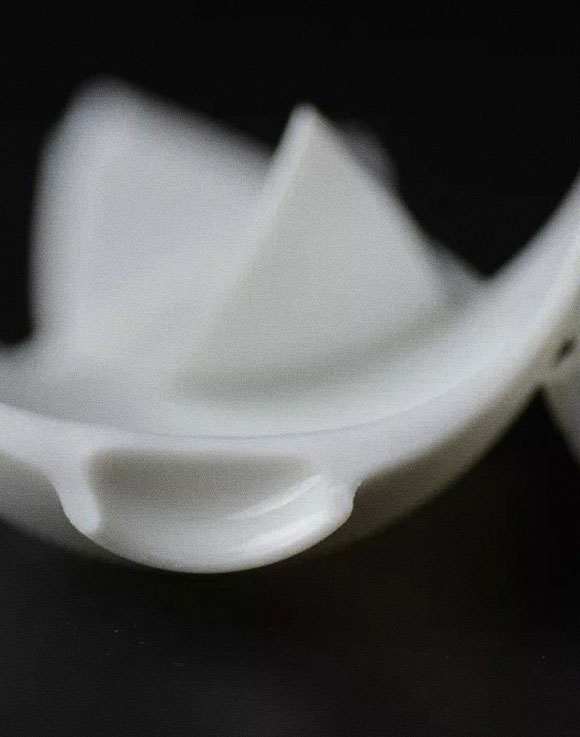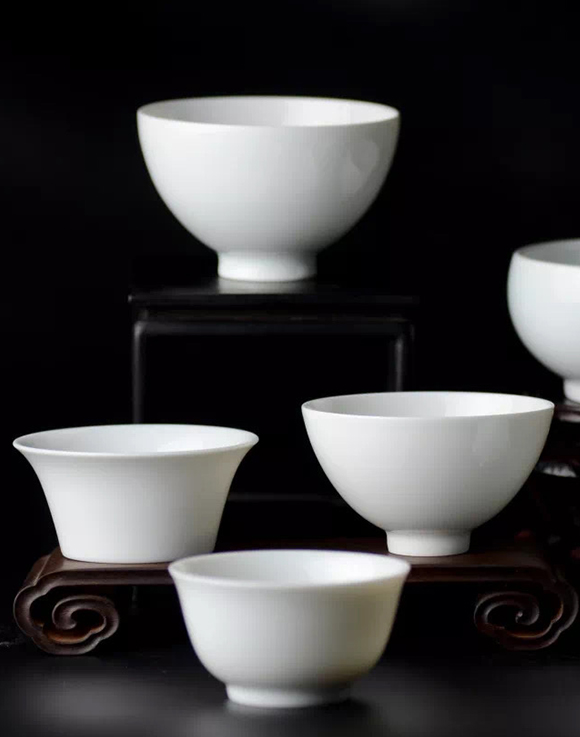Yilin craft
Raw material

The antique tire of Yilintang is close to the proportion of the official kiln in the Qing Dynasty.
The shape of the vessel is subtle and restrained. When the billet is sharp, the knife is better, and the performance of the details is delicate and soft.
It is mostly used on antique and large-scale furnishings.
The newly matched Zhuoyu embryo is firm and compact, with a jade texture and dense stubble. The carcass is harder and less susceptible to knife.
Strong lines, suitable for simple styling. It is mostly used in practical utensils such as tea ceremony.
Taiti
1.Upgrade mud, high hardness and firm texture.
2.The section is smooth and neat, and the fingers are finely ground.
3.The glazed surface is fat and moist, slightly gray, and it is durable and eye-catching.
4.The soles are moist and smooth like a glaze.
5.The thickness of the carcass is exquisite, and the shape of the device is flexible.
1.Too white, imperceptible and dazzling.
2.The fetus is loose, and the section is soft and soft like flour.
3.The glaze is thin, shiny but not oily.
4.The tire repair is too thick, and there is no change in thickness.

The glazed glaze of Yilintang inherits the characteristics of the glaze since Kangxi. Its hair color is clear and eggshell blue flashes on the glaze.
The flash ash glaze is made of two ash glaze, which is characterized by a thick, oily texture.
It is light grey compared to the flash blue glaze, which is a characteristic inherited from the enamel of ancient porcelain. There is no dazzling luster, and it is durable to play and use.
glaze
Modelling
Most of the toys in the Yilin Hall are imitating the style of the palaces of the Yong and Qian Dynasties of the Qing Dynasty, such as the appreciation bottle, the celestial ball bottle, the general can, the large plate, the square inlaid bottle, and the Qianlong antique bronze style.
Small pieces such as Qianlong bionic utensils, Qianlong style wall vase, Republic of China style study series, stick and mallet vase, willow leaf vase, hexagonal inlaid vase, etc. They are all common or typical utensils in history and have a high reputation in the circle.
The molding process is also very complicated, showing the superb modeling technology and aesthetics of Yilintang.
Most of the practical utensils in Yilintang are all kinds of pots, cups, pot holders, etc. in the tea ceremony.
Various types of cups are derived from the classic styles of official kilns in Ming and Qing Dynasties, such as heart-heart cups, hand-pressed cups, and foot-recumbent cups, as well as some reference to the shape characteristics of some cups, such as open mouth, straight wall, and round belly.
Re-integrate into the usage habits that conform to today's life and improve it,This innovative concept of "integrating ancient and modern" is also a major pursuit of Yilin's modeling characteristics.
Most of the toys in the Yilin Hall are imitating the style of the palaces of the Yong and Qian Dynasties of the Qing Dynasty, such as the appreciation bottle, the celestial ball bottle, the general can, the large plate, the square inlaid bottle, and the Qianlong antique bronze style.
Small pieces such as Qianlong bionic utensils, Qianlong style wall vase, Republic of China style study series, stick and mallet vase, willow leaf vase, hexagonal inlaid vase, etc. They are all common or typical utensils in history and have a high reputation in the circle.
The molding process is also very complicated, showing the superb modeling technology and aesthetics of Yilintang.
Most of the practical utensils in Yilintang are all kinds of pots, cups, pot holders, etc. in the tea ceremony.
Various types of cups are derived from the classic styles of official kilns in Ming and Qing Dynasties, such as heart-heart cups, hand-pressed cups, and foot-recumbent cups, as well as some reference to the shape characteristics of some cups, such as open mouth, straight wall, and round belly.
Re-integrate into the usage habits that conform to today's life and improve it,This innovative concept of "integrating ancient and modern" is also a major pursuit of Yilin's modeling characteristics.
Most of the toys in the Yilin Hall are imitating the style of the palaces of the Yong and Qian Dynasties of the Qing Dynasty, such as the appreciation bottle, the celestial ball bottle, the general can, the large plate, the square inlaid bottle, and the Qianlong antique bronze style.
Small pieces such as Qianlong bionic utensils, Qianlong style wall vase, Republic of China style study series, stick and mallet vase, willow leaf vase, hexagonal inlaid vase, etc. They are all common or typical utensils in history and have a high reputation in the circle.
The molding process is also very complicated, showing the superb modeling technology and aesthetics of Yilintang.
Most of the practical utensils in Yilintang are all kinds of pots, cups, pot holders, etc. in the tea ceremony.
Various types of cups are derived from the classic styles of official kilns in Ming and Qing Dynasties, such as heart-heart cups, hand-pressed cups, and foot-recumbent cups, as well as some reference to the shape characteristics of some cups, such as open mouth, straight wall, and round belly.
Re-integrate into the usage habits that conform to today's life and improve it,This innovative concept of "integrating ancient and modern" is also a major pursuit of Yilin's modeling characteristics.
craft
workmanship
The pastel craft of YILIN looks at ancient and modern things from the eyes of The Times, integrates traditional culture with modern aesthetics and lifestyle, and constantly tries new styles of famille-rose pastel on the basis of following the rigorous and exquisite imperial kilns of the Qing Dynasty.
We use raw ore to make powder color exclusively for porcelain. Compared with the chemical pigments on the market, raw mineral powder material is more pure in color, soft in texture, and obviously more beautiful and elegant in hair color.
All artworks are rendered by craftsmen with more than ten years of experience in porcelain painting. They pay attention to painting, or point, or pick, washing, dyeing, filling and scraping gradually become a variety of far-reaching pictures.
You can not only see the exquisite beauty of ancient pastel in YILIN, but also feel the beauty of current life, so as to glimpse the bright prospect of the future of famille-rose porcelain.











































 Hot search words
Hot search words